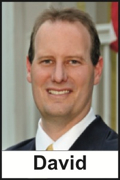Rascals case in brief
In the beginning, in 1989, more than 90 children at the Little Rascals Day Care Center in Edenton, North Carolina, accused a total of 20 adults with 429 instances of sexual abuse over a three-year period. It may have all begun with one parent’s complaint about punishment given her child.
Among the alleged perpetrators: the sheriff and mayor. But prosecutors would charge only Robin Byrum, Darlene Harris, Elizabeth “Betsy” Kelly, Robert “Bob” Kelly, Willard Scott Privott, Shelley Stone and Dawn Wilson – the Edenton 7.
Along with sodomy and beatings, allegations included a baby killed with a handgun, a child being hung upside down from a tree and being set on fire and countless other fantastic incidents involving spaceships, hot air balloons, pirate ships and trained sharks.
By the time prosecutors dropped the last charges in 1997, Little Rascals had become North Carolina’s longest and most costly criminal trial. Prosecutors kept defendants jailed in hopes at least one would turn against their supposed co-conspirators. Remarkably, none did. Another shameful record: Five defendants had to wait longer to face their accusers in court than anyone else in North Carolina history.
Between 1991 and 1997, Ofra Bikel produced three extraordinary episodes on the Little Rascals case for the PBS series “Frontline.” Although “Innocence Lost” did not deter prosecutors, it exposed their tactics and fostered nationwide skepticism and dismay.
With each passing year, the absurdity of the Little Rascals charges has become more obvious. But no admission of error has ever come from prosecutors, police, interviewers or parents. This site is devoted to the issues raised by this case.
On Facebook
Click for earlier Facebook posts archived on this site
Click to go to
Today’s random selection from the Little Rascals Day Care archives….
Click for earlier Facebook posts archived on this site
Click to go to
Today’s random selection from the Little Rascals Day Care archives….
A DA unafraid ‘to go where the truth leads….’
 March 25, 2013
March 25, 2013
“I really see us as sharing the goal of making sure this conviction rests on credible and substantial evidence. I’m going to go where the truth leads in this matter.”
– Jon David, district attorney in Brunswick, Columbus and Bladen counties,
responding to a request from the North Carolina Center on Actual Innocence
to review DNA evidence in the case of Joseph Sledge
Mandy Locke’s account in the News & Observer will inspire confidence in neither the competence nor the good faith of North Carolina justice. Sledge, imprisoned 34 years for a double murder, has encountered unspeakable frustrations in his pursuit of exoneration.
Like Willie Grimes, however, Sledge is at last benefiting from a district attorney unimpaired with willful blindness toward his office’s past failures.
If the Edenton Seven are ever able to achieve true exoneration from the state, it likely won’t be with the acquiescence of the prosecutors, much less their assistance.
It’s not mistakes that obstruct justice. It’s the refusal to admit them.
May 21, 2018
“Cops, district attorneys, defense attorneys, and judges make mistakes all the time. Mistakes don’t obstruct justice. Justice is obstructed by refusing to acknowledge and rectify mistakes, and instead doubling down on and repeating them….”
– From “For a small, blue state, Massachusetts wrongfully convicts a lot of people” by George Bullen at 50 States of Blue (Jan. 30)
The prosecution of the Edenton Seven blew through one red light after another, willfully blind to the enormous mistakes it had made and hell-bent on making even more.
![]()
What, no applause from Attorney General Easley?
June 17, 2013
“I don’t know if Bob Kelly and the staff of that now-infamous Edenton day care center abused those children… But I do know, beyond any reasonable doubt, that something is dreadfully wrong in that case, and I applaud the (N.C.) Court of Appeals ruling that ordered a new trial for Kelly and Kathryn Dawn Wilson. Everyone who cares about justice should join in a standing ovation for the court’s common-sense ruling.
“Fat chance of that.
“The prosecution, led by Attorney General Mike Easley, has already begun its campaign to discredit the ruling as a nitpicking exercise that found minor technicalities in the state’s longest and most expensive trial….”
– From “Justice unlikely for Kelly” by News & Observer columnist Dennis Rogers (May 9, 1995)
Easley said he would petition the N.C. Supreme Court to review the cases immediately: “The decision casts no doubt on the credibility of the children or the integrity of the investigation…. In both cases, the facts supporting the convictions were clear and overwhelming. (The appeals court) disregarded these facts and misapplied the law.”
The Wilson Daily Times opined that “Easley’s vow to appeal the overturning is futile, and he knows it. … Easley tried to play tough prosecutor… implying the convictions were thrown out because of technical indiscretions. But he well knows that the errors in the trials were substantial and egregious (and) made a mockery of justice.”
Four months later, when the N.C. Supreme Court upheld the Court of Appeals, Easley had lost his bravado. “All prosecutors know that cases involving children weaken with age,” he said. “A retrial in this matter will be extremely difficult.”
How one journal editor went very, very wrong
 Dec. 7, 2012
Dec. 7, 2012
Following up on Wednesday’s post:
Here’s how editor Gerry Fewster began his introduction to “In the Shadow of Satan: The Ritual Abuse of Children,” the still-unretracted 1990 special issue of the Journal of Child and Youth Care:
“Putting this issue together has been my most difficult Journal assignment…. It began as a fascinating prospect with little or no supportive documentation. As I discussed the concept with colleagues and friends the most unlikely doors began to open. Fragments of information – odd papers, crude and unfinished manuscripts, unsolicited telephone calls, personal revelations, and even photographs – began to appear….”
Dr. Fewster’s professional skepticism seems to have quickly yielded to those phantasmagoric “fragments of information.” He details an investigative process that….well, evaluate for yourself:
“Many times during the course of reading the material, I decided to quit. I found that I had neither the head nor the stomach for the task…. After spending many hours reading from the protective armor of the editorial role, I would feel physically ill. At first I attributed all of this to my reluctance to examine the depths of my own ‘shadow’ and urged myself on. Then, as my curiosity rekindled, I would shrink back in horror from the spectres of my own hidden motives and intentions….”
Dr. Fewster goes on to introduce his fellow contributors to “In the Shadow of Satan.”
Pamela S. Hudson, for instance, “provides an authoritative wide-angle perspective. Based upon clinical experience and the results of her own survey, the author identifies and discusses the most frequently reported symptoms and allegations surrounding ritual child abuse. Beyond the grisly nature of the content, this seasoned practitioner offers a wealth of insight for those who wish to know about satanic practices and better understand the terrifying experiences of children caught up in this vicious network.”
Hudson’s article isn’t available online, but fortunately is preserved in her subsequent book “Ritual Child Abuse: Discovery, Diagnosis and Treatment.” Here’s an example of the “wealth of insight” provided by “this seasoned practitioner”:
“The exceptional symptom in ritual abuse cases is the sudden eating disorder
demonstrated by these children. Besides being revolted by meat, catsup, spaghetti and tomatoes (which resemble organs), (cf., Catherine Gould) I had a case of a 20-month-old girl suddenly start to throw away her baby bottle. When she was older she said the perpetrator urinated into her baby bottle during his visits with her. Later, she spoke of witnessing the death of a baby girl….”
All this impressionistic pseudoscience could be written off as overreaching silliness, had it not contributed to the moral panic that swept up innocent victims such as the Edenton Seven. Isn’t it time for the editors at those professional journals that enabled the reign of error to at last set the record straight?











0 CommentsComment on Facebook